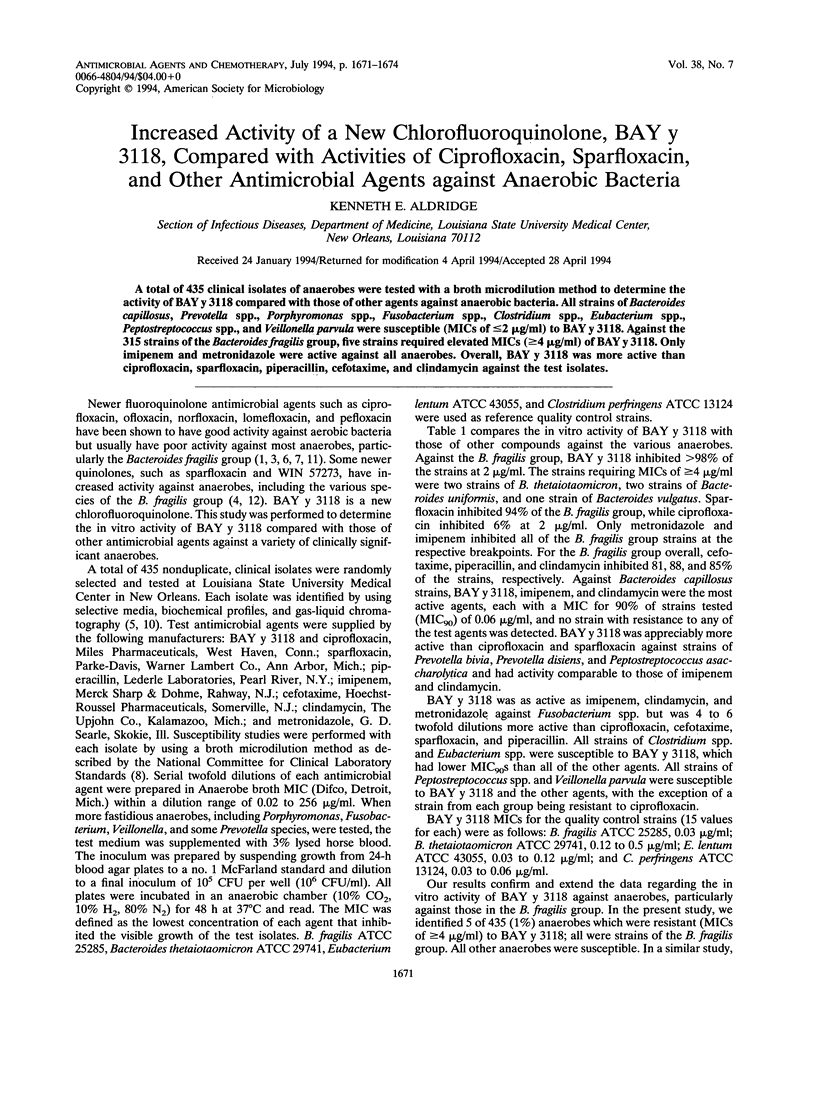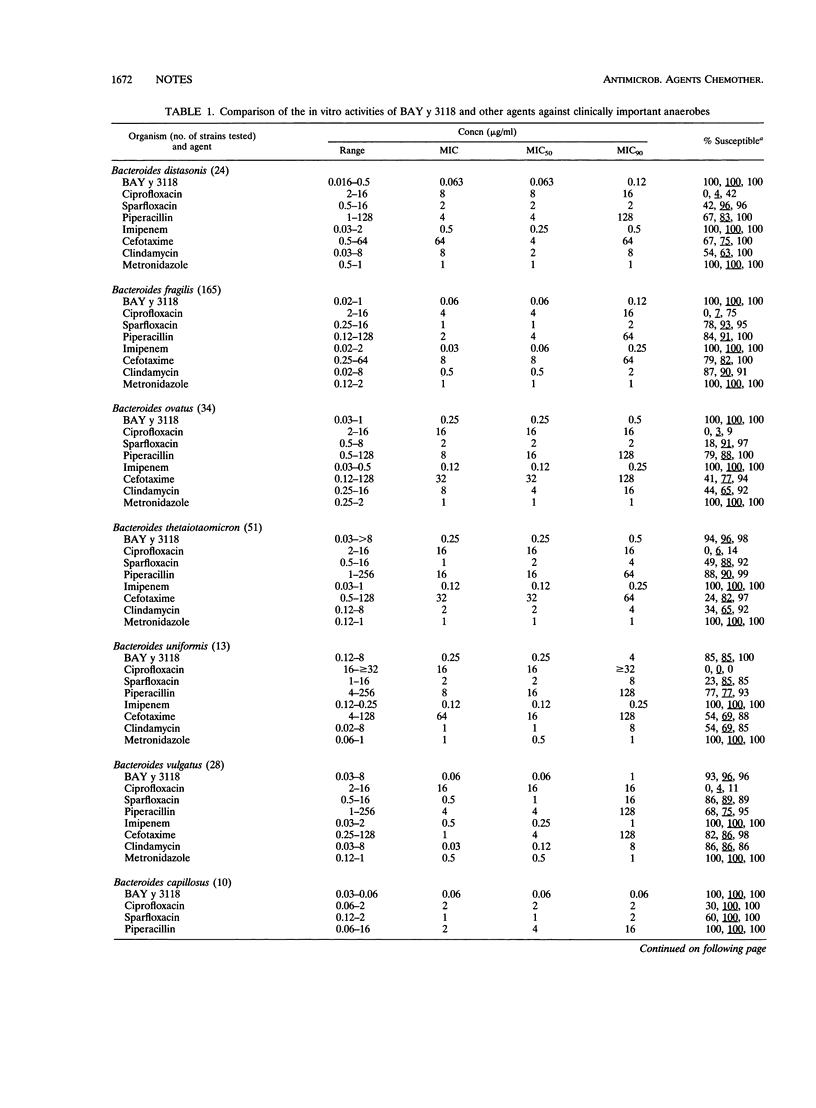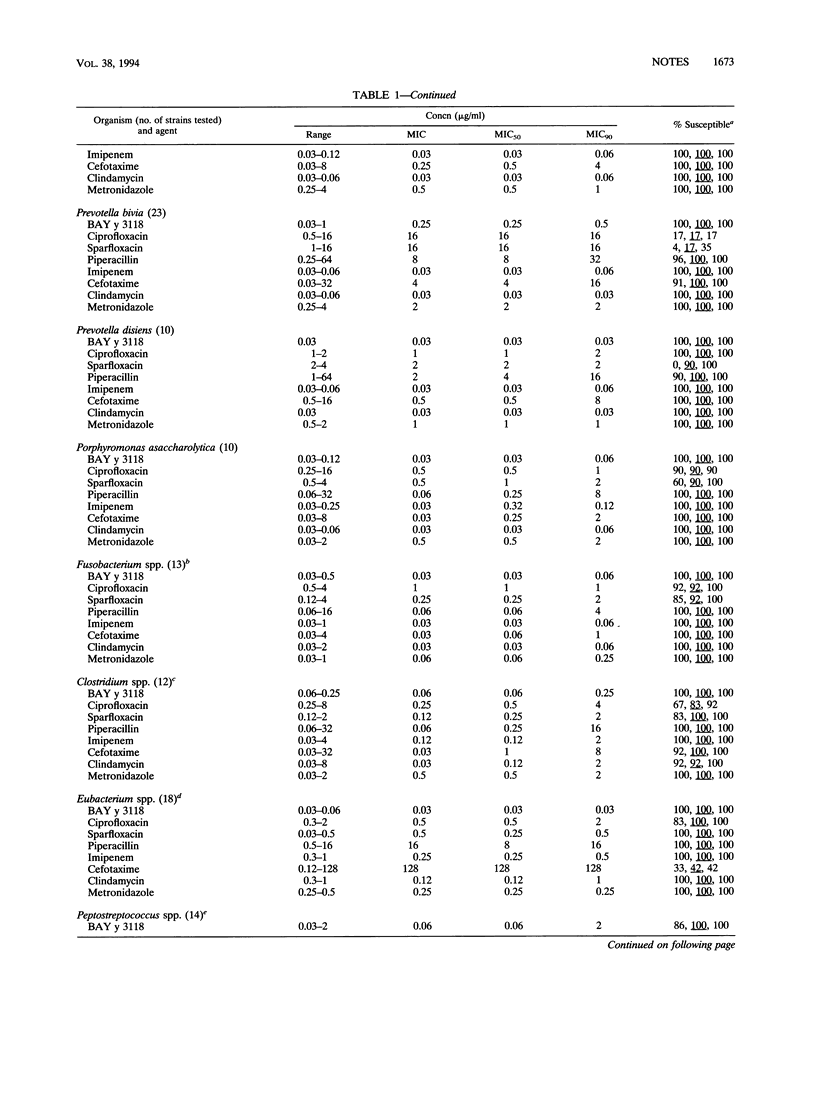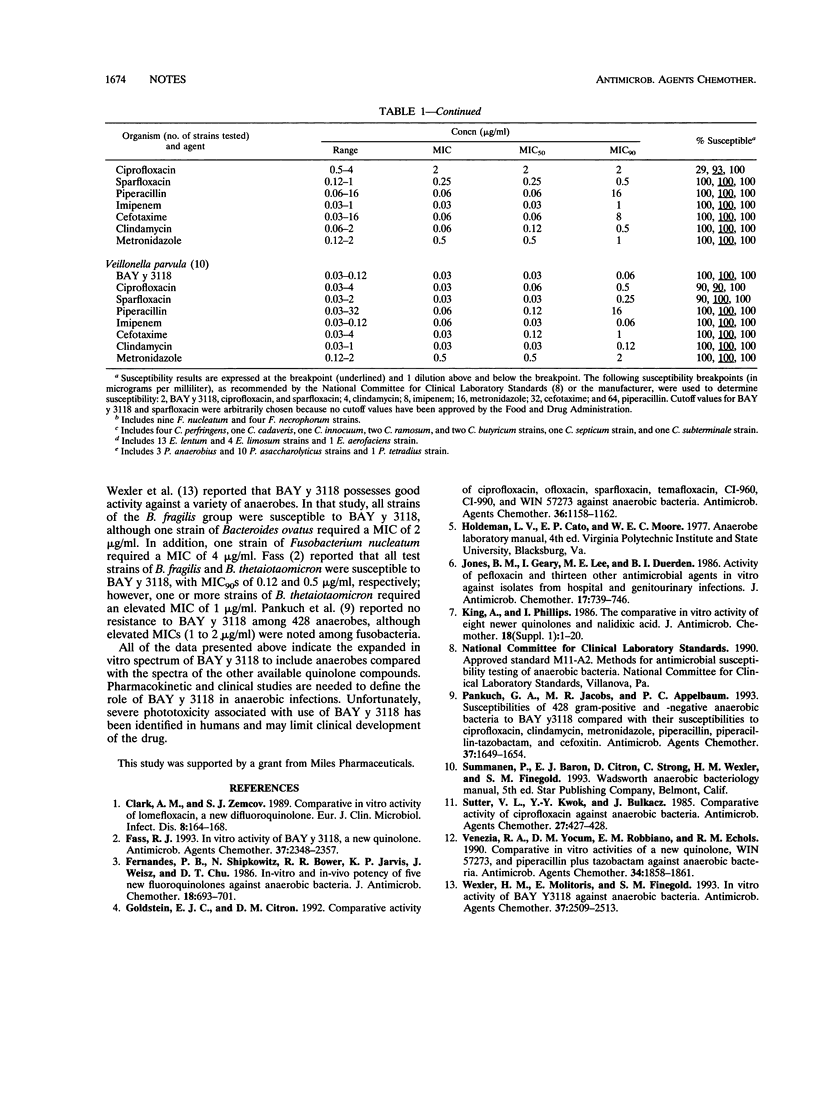Abstract
A total of 435 clinical isolates of anaerobes were tested with a broth microdilution method to determine the activity of BAY y 3118 compared with those of other agents against anaerobic bacteria. All strains of Bacteroides capillosus, Prevotella spp., Porphyromonas spp., Fusobacterium spp., Clostridium spp., Eubacterium spp., Peptostreptococcus spp., and Veillonella parvula were susceptible (MICs of < or = 2 micrograms/ml) to BAY y 3118. Against the 315 strains of the Bacteroides fragilis group, five strains required elevated MICs (> or = 4 micrograms/ml) of BAY y 3118. Only imipenem and metronidazole were active against all anaerobes. Overall, BAY y 3118 was more active than ciprofloxacin, sparfloxacin, piperacillin, cefotaxime, and clindamycin against the test isolates.
Full text
PDF



Selected References
These references are in PubMed. This may not be the complete list of references from this article.
- Clarke A. M., Zemcov S. J. Comparative in vitro activity of lomefloxacin, a new difluoroquinolone. Eur J Clin Microbiol Infect Dis. 1989 Feb;8(2):164–168. doi: 10.1007/BF01963905. [DOI] [PubMed] [Google Scholar]
- Fass R. J. In vitro activity of Bay y 3118, a new quinolone. Antimicrob Agents Chemother. 1993 Nov;37(11):2348–2357. doi: 10.1128/aac.37.11.2348. [DOI] [PMC free article] [PubMed] [Google Scholar]
- Fernandes P. B., Shipkowitz N., Bower R. R., Jarvis K. P., Weisz J., Chu D. T. In-vitro and in-vivo potency of five new fluoroquinolones against anaerobic bacteria. J Antimicrob Chemother. 1986 Dec;18(6):693–701. doi: 10.1093/jac/18.6.693. [DOI] [PubMed] [Google Scholar]
- Goldstein E. J., Citron D. M. Comparative activity of ciprofloxacin, ofloxacin, sparfloxacin, temafloxacin, CI-960, CI-990, and WIN 57273 against anaerobic bacteria. Antimicrob Agents Chemother. 1992 May;36(5):1158–1162. doi: 10.1128/aac.36.5.1158. [DOI] [PMC free article] [PubMed] [Google Scholar]
- Jones B. M., Geary I., Lee M. E., Duerden B. I. Activity of pefloxacin and thirteen other antimicrobial agents in vitro against isolates from hospital and genitourinary infections. J Antimicrob Chemother. 1986 Jun;17(6):739–746. doi: 10.1093/jac/17.6.739. [DOI] [PubMed] [Google Scholar]
- King A., Phillips I. The comparative in-vitro activity of eight newer quinolones and nalidixic acid. J Antimicrob Chemother. 1986 Nov;18 (Suppl 500):1–20. doi: 10.1093/jac/18.supplement_d.1. [DOI] [PubMed] [Google Scholar]
- Pankuch G. A., Jacobs M. R., Appelbaum P. C. Susceptibilities of 428 gram-positive and -negative anaerobic bacteria to Bay y3118 compared with their susceptibilities to ciprofloxacin, clindamycin, metronidazole, piperacillin, piperacillin-tazobactam, and cefoxitin. Antimicrob Agents Chemother. 1993 Aug;37(8):1649–1654. doi: 10.1128/aac.37.8.1649. [DOI] [PMC free article] [PubMed] [Google Scholar]
- Sutter V. L., Kwok Y. Y., Bulkacz J. Comparative activity of ciprofloxacin against anaerobic bacteria. Antimicrob Agents Chemother. 1985 Mar;27(3):427–428. doi: 10.1128/aac.27.3.427. [DOI] [PMC free article] [PubMed] [Google Scholar]
- Venezia R. A., Yocum D. M., Robbiano E. M., Echols R. M. Comparative in vitro activities of a new quinolone, WIN 57273, and piperacillin plus tazobactam against anaerobic bacteria. Antimicrob Agents Chemother. 1990 Sep;34(9):1858–1861. doi: 10.1128/aac.34.9.1858. [DOI] [PMC free article] [PubMed] [Google Scholar]
- Wexler H. M., Molitoris E., Finegold S. M. In vitro activity of Bay Y3118 against anaerobic bacteria. Antimicrob Agents Chemother. 1993 Nov;37(11):2509–2513. doi: 10.1128/aac.37.11.2509. [DOI] [PMC free article] [PubMed] [Google Scholar]


